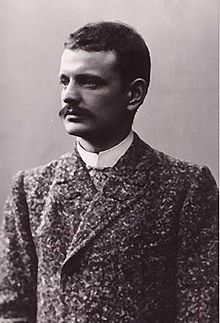.jpg)
Inside a Paris restaurant Maxim. A painting illustrating the tendency and the pursuit of the French Golden Era also known as La Belle 'Epoque.
The humanity lived one of the most exciting times in our history. In the early 1900's and probably a few decades earlier many felt that the industrial, economic and scientific evolution had no limits. During this era numerous different innovations changed people's everyday-life for everlastingly. The era of the European Golden Days are conventionally dated from the end of the Franco-Prussian War in 1871 until the outbreak of the WWI. However, the days of the insouciance had signs of running out of time already in 1912 while the loss of the passenger liner RMS Titanic caused heavy traumas and the glorious innovations started to lose the magical brilliancy, furthermore the innovations of the arms industry slayed down millions of young soldiers - entire generations.
La Belle 'Epoque flourished in Europe. This period was characterized by optimism - positivism - regional peace - economic prosperity - technological, scientific and cultural innovations. It was time of masterpieces in literature, arts, theater and visual arts. European civilizations reached their greatest power in the global politics and France perhaps was affected the most and relished the European heydays. After the economic depression ended in France in 1896 the economic growth was unparalleled - supported by the second industrial restructuring and the French Third Republic with "revenge" spirits.

The Flying Tailor and his parachute suite - Francois Reichelt
The people everywhere where ready to take the next step - to conquer the skies. The evolution in the aviation had been vaulting. Only in few decades during La Belle 'Epoque, the dream - centuries old, was finally coming in true. The first aviators risked their lives, taking their chances and trying to make the impossible and reach the skies. They were brave, even mad-brave...but sometimes the common sense was absolutely fogged-up.
Franz Reichelt was an Austrian-born tailor, inventor and parachute pioneer. He obtained the French nationality and changed his first name for Francois. Trying to achieve prestige and glory Reichelt's end was a fatal one. Reichelt, as a tailor developed a suit for aviators that would convert into a parachute during a free-fall allowing aviators to survive if they were forced out of their aircraft during a flight. In his early experiments Reichelt had been successful while dropping dummies wearing the parachute suit from the 5th floor of his apartment building.
To prove his invention's final efficiency Reichelt believed a high-test platform was needed. In 1912 with arguing and insisting Reichelt was finally granted a permission by the Paris authoritative to conduct a test from the Eiffel Tower. The high-platform test was initially meant to be accomplished with the dummies only, but Reichelt made it clear that he was intented to do the jump personally.
On February 4th in 1912 Reichelt climbed for the first platform of the Eiffel Tower already wearing his suit. At the first platform he mounted on a handrail, but suddenly started wavering in his decision - perhaps doubting the suitability of his invention...but he had promised for the motion pictures cameramen to complete this daring show. He took the step for the emptiness...the parachute failed to deploy and Reichelt plummeted for 57 meters into his death.
If you want, you can see the death-jump here.


